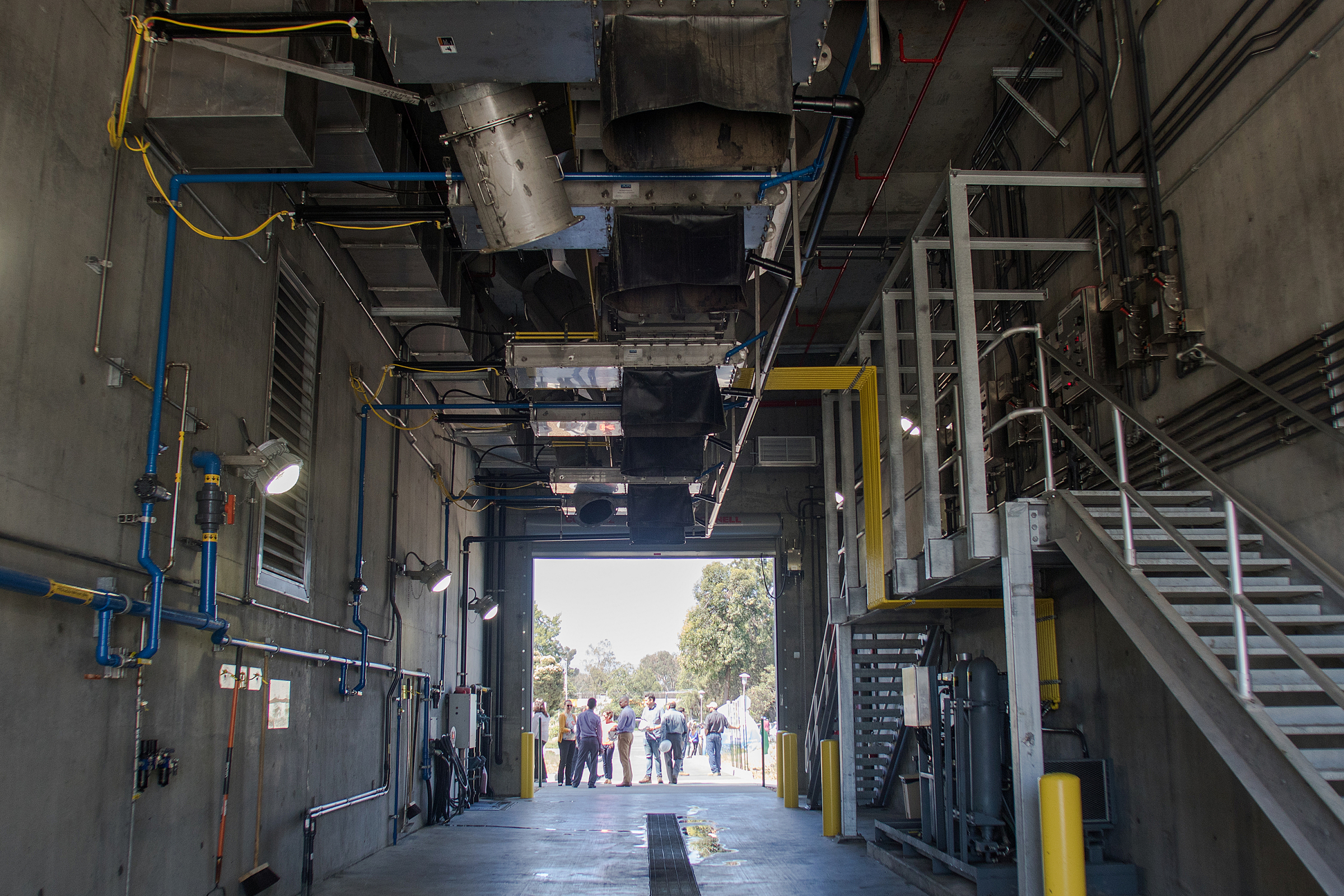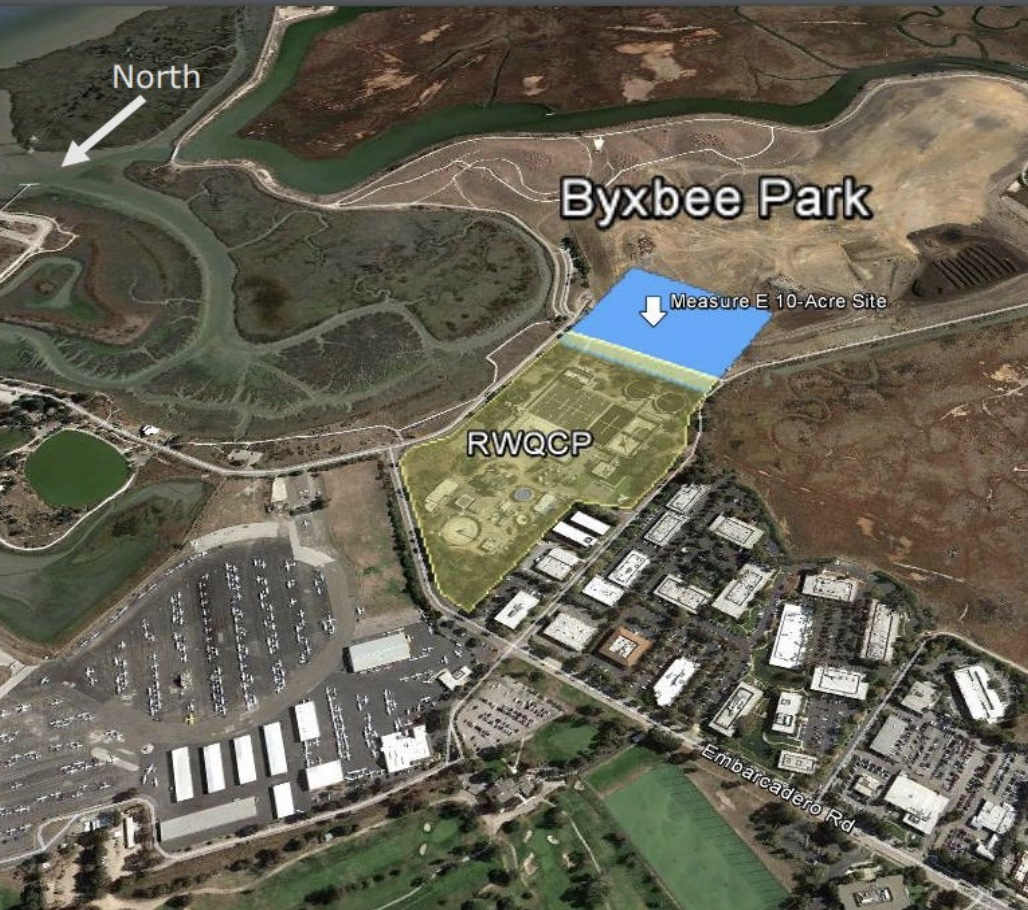The future of Palo Alto's most disputed piece of open space will once again be up in the air next week, when the City Council considers two competing visions for sustainability.
The 10-acre parcel is located in the Baylands, adjacent to both the wastewater plant and Byxbee Park. And for over a decade, it has been at the center of a tug-of-war between climate activists who see it as perfectly suited for a waste-to-energy facility and conservationists who see it as a valuable but neglected bit of open space. On Monday night, April 3, the City Council will consider both sides as it seeks to answer a question that continues to divide local environmentalists: Should the site be officially rededicated as parkland?
For many local conservationists, the answer is clearly yes. During a public hearing in front of the Parks and Recreation Commission last October, representatives from groups such as the Sierra Club and the Santa Clara Valley Audubon Society urged the commission to support rededicating the land. The 10 acres were considered parkland until 2011, when voters approved Measure E and made the site available for a waste-to-energy facility.
Michael Ferreira, who serves on the executive committee of the Sierra Club Loma Prieta Chapter, called the "undedication" of the 10-acre site a "mistake taken in good faith." Ferreira noted that the city hasn't built the plant that was envisioned in the lead-up to Measure E, and he dismissed any other ideas about installing a waste facility as "more futurism."
"There's something about taking away parkland — un-dedicating parkland — that just goes against the grain," Ferreira said at the hearing.
Susan DesJardins, chair of the Sierra Club's San Francisco Bay Alive Campaign, called the Bay a critical habitat for fish, birds and other wildlife and argued that urban and industrial growth has placed pressure on the area's environmental health. She called the site a "critical corridor between" Harbor Marsh and the Emily Renzel wetlands.
"This site needs tender love and care, not industrialization," DesJardins said.
Others see things starkly differently. Palo Alto resident Debbie Mytels recalled in an interview the excitement she witnessed in the community when she was gathering signatures in front of Piazza's grocery store for Measure E more than a decade ago. Supporters of the measure, which won 65% of the vote, enthusiastically endorsed the idea of building a facility that would both produce energy and take care of local solid waste, which currently gets shipped to an anaerobic digester in San Jose.
"I don't think we should immediately just say, 'Let's throw in the towel!' In part, because it seems to me the site isn't really suitable for parkland. It's right next to the sewage treatment plant: not where you want to have a picnic," Mytels said.
One technology that Mytels and others want to see the city explore is pyrolysis, which uses high heat to convert organic waste into syngas and biochar. The former could be used for power; the latter has various uses, most notably as a soil additive in agriculture. She and other supporters of Measure E point as an example in Redwood City, where the company Bioforcetech is currently operating a pyrolysis facility for Silicon Valley Clean Water, an agency that serves Belmont, Redwood City, San Carlos and the West Bay Sanitary District.
Bruce Hodge, member of the group Carbon Free Palo Alto, is also hoping that the city will continue to evaluate ways to use the Measure E site for waste management. A pyrolysis plant, he said, fits well with the vision of Measure E, which expressly limits development to facilities that would be used for "converting yard trimmings, food waste, other municipal organics and/or sewage sludge from the regional wastewater treatment plant by biological and/or other environmentally equally protective technology."
The syngas that is produced through the plant is used to power the pyrolysis process, Hodge noted, and the biochar gets cleansed of harmful synthetic chemicals known as "per and polyfluoroalkyl substances" (PFAs). The plant, he said, "is essentially net zero."
"Based on the research I've done, I think the pyrolysis option is most promising because it both delivers carbon-negative emissions through sequestration of the carbon and it takes care of the PFAs problem," he said.
But supporters of exploring a new plant suffered a setback in October, when the parks commission voted 4-2 to recommend the rededication of the site as parkland, which would effectively kill any proposed development. Chair Jeff Greenfield, speaking for the majority, noted that 10 years have already passed since Measure E passed and that there are currently no plans on the horizon to build any waste facility.
The measure authorized the council to restore the site as parkland after 10 years if a facility had not been built, and Greenfield was among those who suggested it's time to do just that.
Greenfield also pointed to the "uncomfortable position" of seeing traditional allies in opposition.
"We know this issue has sharply divided our community, without question," Greenfield said. "And it's a division among community members who are more typically on the same side when there are matters of environmental decisions and sustainability going forth."
Commissioner Shani Kleinhaus, an environmental advocate at Santa Clara Valley Audubon Society, also argued that the current designation keeps the land in limbo, a policy that she called "unjustifiable."
"We have 10 acres there that people would really like to see restored, sitting as a hostage in a way," Kleinhaus said at the meeting.
On Monday it will be the council's turn to weigh in. In a new report, staff from the Community Services Department do not take a position on the potential rededication of the Measure E site. The report notes, however, that the site could play a role in city discussions of other climate-change initiatives.
"This includes evaluating the development of an advanced water purification facility at the former Los Altos Treatment Plant, other wastewater treatment needs, and sea-level rise planning," the report states. "These interests could lead to other potential uses for the Measure E site."




Comments